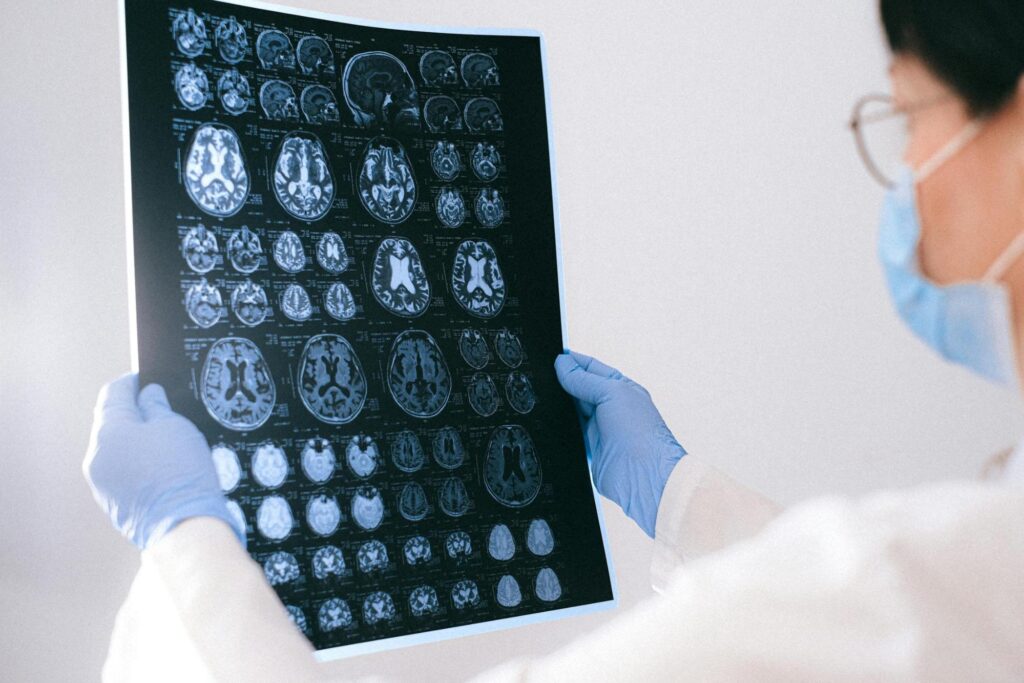Magnetic Resonance Imaging (MRI) is a pivotal tool in modern medicine, especially for diagnosing various conditions that may cause pain. Unlike traditional X-rays, MRIs use powerful magnets and radio waves to generate detailed images of organs and tissues within the body.
This advanced imaging technology has proven invaluable for diagnosing soft tissue injuries, tumors, and neurological disorders.
However, when wondering what if MRI shows nothing but still in pain, it is essential to understand that MRIs primarily assist in visualizing structural issues rather than functional ones. Therefore, while an MRI can provide critical insights into anatomical problems, it doesn’t always correlate with the level of pain a patient experiences. Pain is a complex symptom influenced by multiple factors beyond mere physical abnormalities. Psychological aspects, such as stress and anxiety, can amplify the perception of pain, making it imperative for healthcare providers to consider the whole patient rather than just the imaging results.
The Science Behind MRI Technology

The underlying science of MRI is fascinating and revolves around the principles of nuclear magnetic resonance. The MRI machine creates a strong magnetic field that aligns the hydrogen atoms in your body. Radiofrequency pulses are then applied, causing these atoms to emit signals that are captured and transformed into images. This technology enables healthcare professionals to visualize the structure of muscles, nerves, and other tissues in unprecedented detail.
Because of this, MRIs are instrumental in identifying issues such as herniated discs, ligament tears, and tumors. However, the insights provided by an MRI are often not exhaustive, as they can’t reveal why someone feels pain in the absence of structural findings. The interpretation of MRI results also requires a skilled radiologist, as subtle differences in imaging can indicate varying degrees of pathology. This highlights the importance of a multidisciplinary approach, where radiologists, neurologists, and pain specialists collaborate to formulate a comprehensive understanding of a patient’s condition.
Limitations of MRI in Detecting Pain
Despite their effectiveness, MRIs have notable limitations when it comes to diagnosing pain. First and foremost, the absence of findings on an MRI doesn’t necessarily indicate that pain is fictitious or non-existent. Many patients report significant pain even when imaging results show no apparent abnormalities.
Furthermore, there are a variety of conditions that may cause pain without corresponding structural damage visible on an MRI. These can include:
- Muscle tension and strain
- Nerve entrapment syndromes
- Chronic regional pain syndromes
- Inflammatory or autoimmune conditions
These complexities underscore the need for a comprehensive approach to diagnosis and treatment rather than solely relying on imaging results. In fact, many healthcare providers advocate for a combination of diagnostic tools, including physical examinations, patient history, and sometimes even psychological assessments, to gain a holistic view of a patient’s pain. This multifaceted strategy not only aids in accurate diagnosis but also in developing tailored treatment plans that address both the physical and emotional components of pain, ultimately leading to better patient outcomes.
Exploring Other Diagnostic Tools for Pain
Recognizing that an MRI may not provide all the answers is crucial. A multifaceted approach that incorporates clinical examinations and other diagnostic tools is essential for a thorough understanding of unexplained pain.
The Importance of Clinical Examination
A detailed clinical examination by a qualified healthcare provider can reveal important insights that an MRI might miss. During a physical examination, physicians assess a patient’s range of motion, strength, and overall physical condition. They may also consider the patient’s medical history and conduct specific diagnostic tests that can provide information on potential issues affecting the musculoskeletal or nervous systems.
An effective clinical examination forms the bedrock of a thoughtful diagnostic process, guiding actions and assessments that can lead to more effective pain management strategies. Moreover, the physician’s ability to observe the patient’s posture, gait, and even their emotional responses can yield valuable clues about the underlying causes of pain. This holistic view can be instrumental in identifying psychosomatic factors or stress-related conditions that may not be evident through imaging alone.
The Role of Blood Tests and X-Rays
In addition to clinical evaluations, the use of blood tests and X-rays can be significant. Blood tests can identify markers of inflammation or infection, while X-rays can help detect bone abnormalities that MRIs may overlook. For conditions like arthritis or fractures, these diagnostic tools can provide essential information regarding the patient’s health.
Overall, combining various diagnostic modalities can help create a clearer picture of a patient’s condition, allowing for more targeted treatment options. Furthermore, advanced imaging techniques such as ultrasound can also play a role in diagnosing soft tissue injuries or guiding injections for pain relief. This versatility in diagnostic tools not only enhances the accuracy of the diagnosis but also empowers healthcare providers to tailor treatment plans that address the specific needs of each patient, thereby improving outcomes and quality of life.
The Mystery of Unexplained Pain

Unexplained pain can be intensely frustrating for individuals who face it. Despite their best efforts, many find themselves searching for answers in a system that seems to yield none. Understanding the complexities and contributing factors can demystify this experience.
Psychological Factors and Pain Perception
It is crucial to recognize that pain perception is not solely a physical phenomenon. Psychological factors, such as stress, anxiety, and depression, can significantly influence how one experiences pain. Research has demonstrated that emotional well-being impacts the pain experience, with heightened stress potentially amplifying the perception of pain.
Moreover, cognitive behavioral therapy (CBT) and other psychological interventions can be beneficial in managing pain by addressing maladaptive thought patterns and promoting healthier coping strategies. Techniques such as mindfulness meditation and relaxation exercises have also shown promise in reducing pain intensity by fostering a sense of calm and improving emotional regulation. These approaches not only help individuals cope with their pain but also empower them to take an active role in their healing process, thereby enhancing their overall quality of life.
The Concept of Phantom Pain
The phenomenon of phantom pain illustrates the disconnect between physical injuries and pain perception. Phantom pain occurs when individuals experience sensations in a part of their body that has been amputated or is no longer functioning. This condition highlights the brain’s critical role in pain perception and the potential for pain to exist independently of physical abnormalities.
Such cases demonstrate that understanding pain often requires looking beyond the physical realm into neurological and psychological dimensions, paving the way for innovative treatment approaches. For instance, recent advancements in neuromodulation techniques, such as transcranial magnetic stimulation (TMS) and virtual reality therapy, have shown potential in alleviating phantom pain by retraining the brain’s response to sensory input.
These cutting-edge therapies not only offer hope for those suffering from phantom pain but also open new avenues for research into the complex interplay between the brain, body, and pain perception, fostering a deeper understanding of how we experience pain in all its forms.
Managing Pain When MRI Shows Nothing
When an MRI reveals no discernible issues, managing pain can feel like an uphill battle. However, there are effective strategies available that encompass both non-pharmacological and pharmacological approaches.
Non-Pharmacological Approaches to Pain Management
Many patients find success in addressing chronic pain through non-pharmacological methods. These approaches can include:
- Physical therapy, which can help in restoring movement and reducing pain
- Acupuncture, which has been shown to provide relief for various pain conditions
- Mindfulness and relaxation techniques, which can help in reducing stress and improving pain perception
- Exercise programs tailored to individual capabilities, assisting in enhancing physical function
These approaches are effective in managing pain and can improve overall quality of life. Additionally, cognitive-behavioral therapy (CBT) has gained recognition for its role in pain management. CBT helps patients reframe their thoughts about pain, enabling them to develop coping strategies that can diminish the emotional distress often associated with chronic pain. Furthermore, engaging in support groups can provide a sense of community, allowing individuals to share experiences and strategies, which can be incredibly empowering and validating.
The Role of Medication in Pain Management
While non-pharmacological options are valuable, medications can still play a significant role in pain management. Over-the-counter pain relievers like ibuprofen or acetaminophen can be employed for mild to moderate pain. For more severe pain, doctors may prescribe stronger medications, including opioids or corticosteroids, though careful management is vital to mitigate potential side effects and dependency.
Regular evaluation of medication efficacy and adjustments can ensure a safe and effective pain management regimen tailored to individual needs. In addition to traditional medications, some patients may benefit from adjunct therapies such as topical analgesics or nerve blocks, which can provide localized relief without the systemic side effects associated with oral medications. As the landscape of pain management continues to evolve, integrating innovative treatments like neuromodulation techniques, which involve electrical stimulation of nerves, is becoming an increasingly viable option for those grappling with persistent pain despite normal imaging results.
The Importance of Patient-Doctor Communication
For individuals experiencing unexplained pain, effective communication with healthcare providers is essential. This partnership can foster better understanding and more comprehensive management of pain conditions. When patients feel heard and understood, they are more likely to engage in their treatment plans and adhere to prescribed therapies, ultimately leading to improved health outcomes.
Discussing Your Symptoms Effectively
Communicating symptoms clearly helps healthcare providers understand a patient’s experience. Providing detailed accounts of pain locations, intensity, duration, and any other related symptoms can aid significantly in diagnosis and treatment planning. Patients should feel empowered to share not just their physical symptoms but also psychological factors that may be influencing their pain. Emotional distress, anxiety, or depression can all exacerbate physical symptoms, and acknowledging these factors can lead to a more comprehensive treatment approach.
Keeping a pain diary that tracks symptom patterns and responses to different treatments can also be helpful for both patients and doctors, facilitating a more informed dialogue. This diary can include notes on activities that trigger or alleviate pain, dietary habits, and sleep patterns, providing a holistic view of the patient’s health. Such detailed records can help healthcare providers identify potential lifestyle modifications or alternative therapies that might improve the patient’s quality of life.
Navigating the Healthcare System with Unexplained Pain
Navigating the complexities of the healthcare system can be daunting, especially when faced with unexplained pain. Patients may need to advocate for themselves, seeking specialists and second opinions if necessary. Building a supportive network of healthcare professionals who prioritize a holistic approach to pain management can significantly enhance one’s treatment experience.
This network might include physical therapists, psychologists, and pain management specialists, all of whom can contribute unique insights and strategies for coping with pain.
Being proactive, asking questions, and participating actively in one’s own healthcare can foster better outcomes and minimize feelings of frustration and helplessness.
Patients should not hesitate to inquire about the rationale behind specific treatments or tests, as understanding the process can empower them and reduce anxiety. Additionally, exploring patient support groups can provide emotional support and valuable information from others who share similar experiences, creating a sense of community and understanding that is often crucial in managing chronic pain effectively.
Conclusion
Experiencing pain without clear MRI findings can be perplexing and frustrating, especially if it’s the result of an auto accident. While MRIs may not always reveal the extent of soft tissue injuries, the impact on your daily life can be significant. It’s important to seek the right diagnosis and treatment, but also to understand that these injuries may entitle you to compensation for your suffering.
If you or a loved one have been involved in an auto accident, truck accident or car accident and are dealing with pain that’s not visible on an MRI, contact Howe.Law for immediate assistance. Our experienced attorneys are available 24/7 to guide you through the legal process and fight for the compensation you deserve. Call us at (888) 559-7612 or visit Howe Law to learn more.
Related Articles


























































